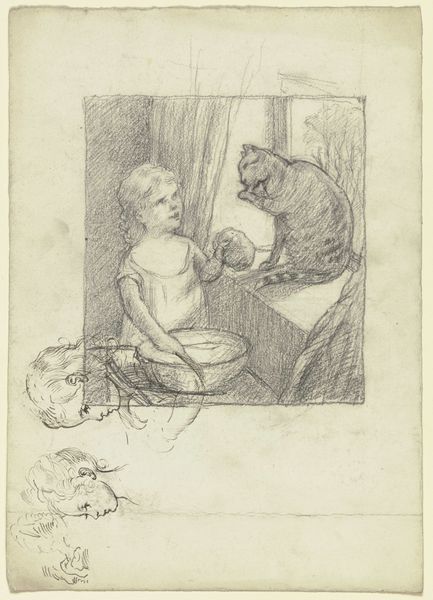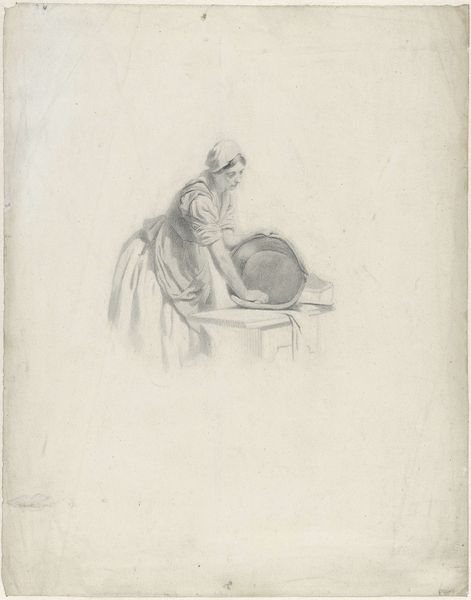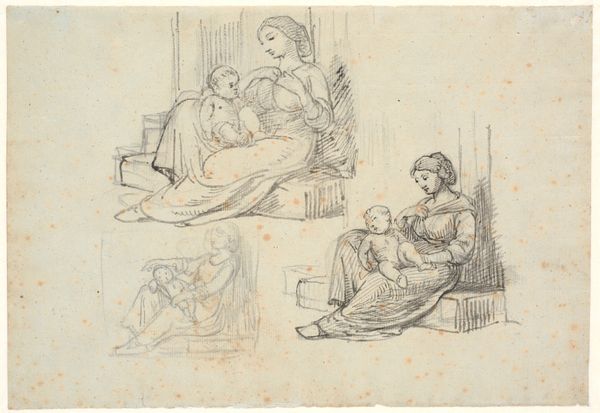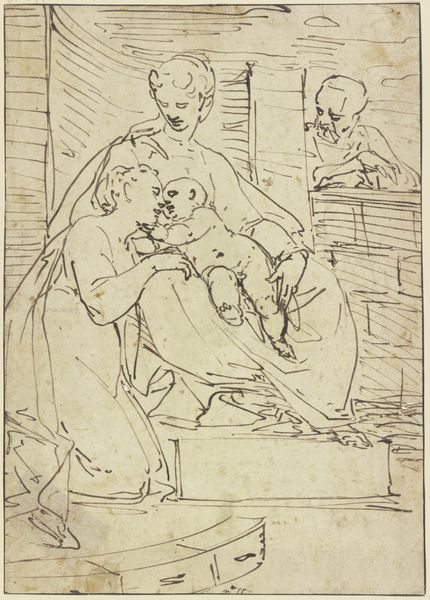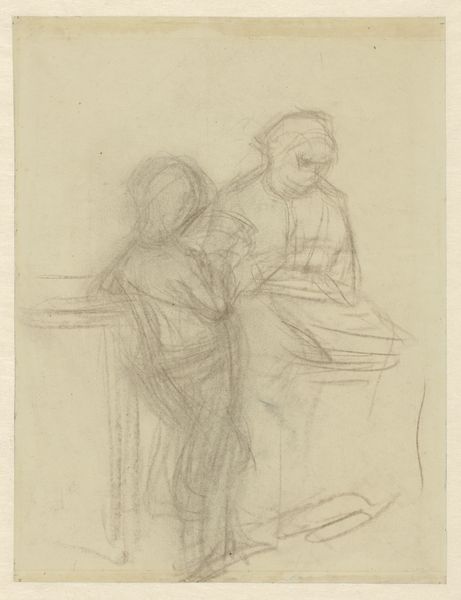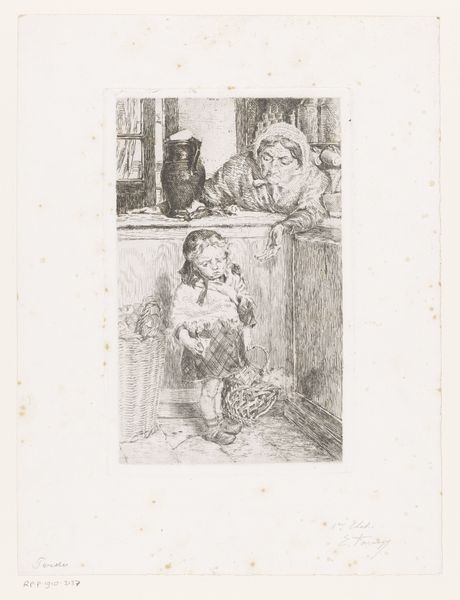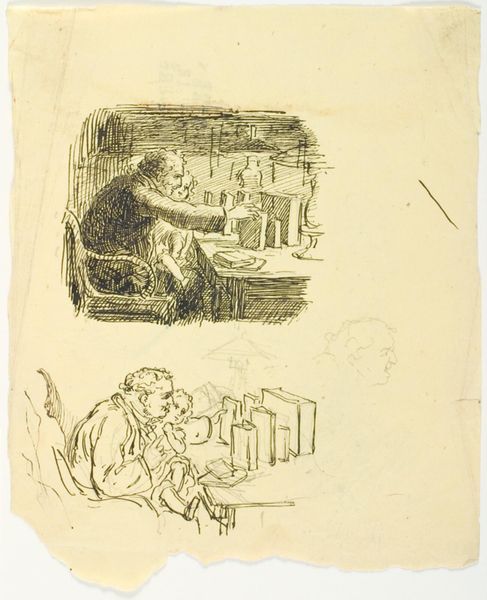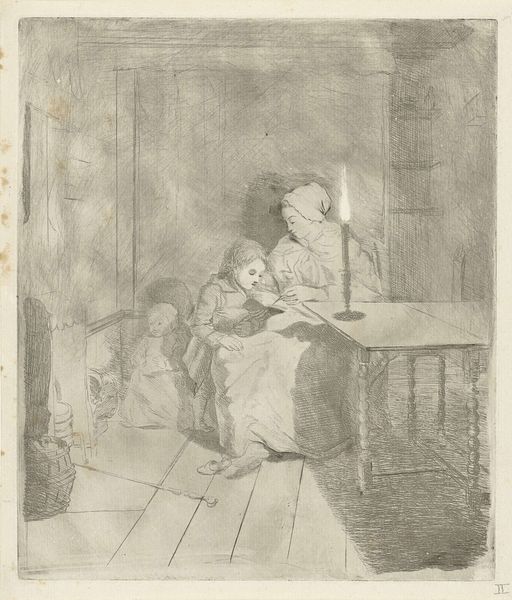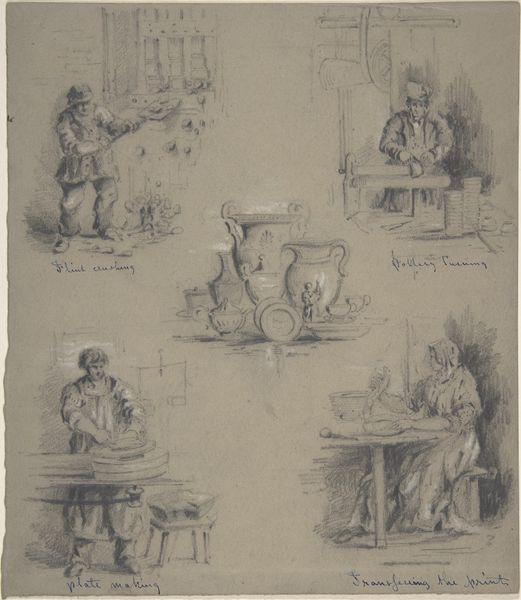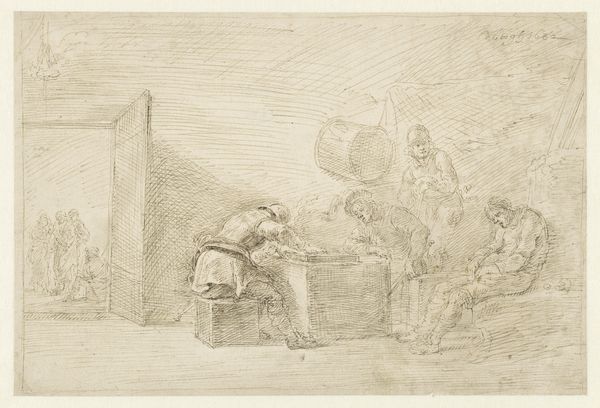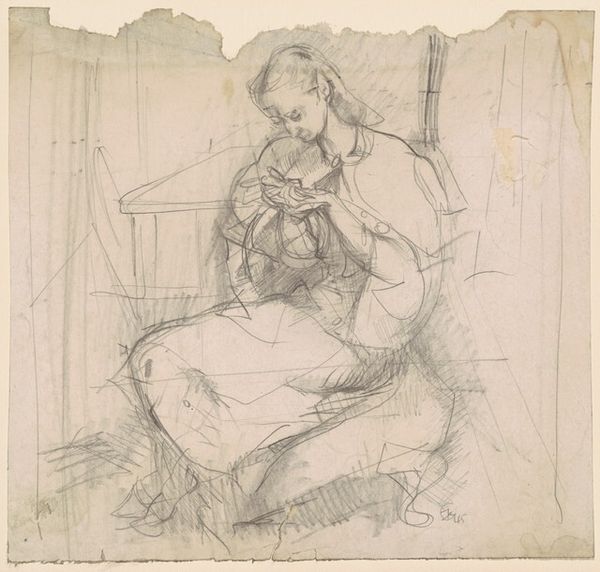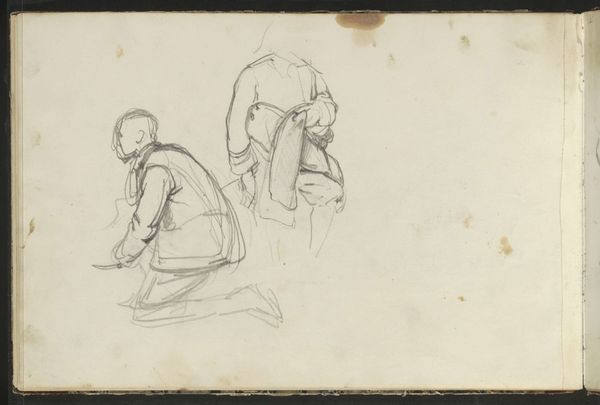
drawing, paper
#
portrait
#
drawing
#
paper
#
sketch
#
genre-painting
Copyright: Public Domain
Curator: This is Otto Scholderer's sketch, "The Cat's Breakfast," rendered on paper in pencil. Editor: What strikes me immediately is the starkness. The unadorned lines, the barest hint of a scene. It’s raw. Curator: Precisely. Note the diagonal hatching providing tonal contrast to model form and space. The artist concentrates on the human and animal figure in the picture, each treated as separate, equally weighted shapes. Editor: But the cat seems to mirror her posture almost exactly. One even sees another smaller, curled cat rendered along the lower portion of the page—all together they evoke the complex bonds between humans and their companions, or rather human children and their animal peers, as an initiatory process for children. It also raises considerations for the roles children have played over history in forming emotional relations. Curator: I agree that Scholderer captured an everyday narrative, however consider how, through his deft manipulation of line, one senses depth of focus or intention? The primary figures are treated with linear concentration and the negative space surrounding them is emphasized by this treatment. Editor: Yes, the artist focuses our attention but, that style also emphasizes the delicate negotiations of domestic life, childhood experience, pets as avatars of emotional exploration, etc. Think about children throughout history, what has distinguished one age to another or place to another, consider food habits and childhood learning, even religious affiliation--such symbols abound throughout artwork of the time and perhaps there is a similar relationship here between child and the animal. The symbolism invites so much. Curator: You draw such deep inferences, but my immediate observation of the composition’s spatial depth leads me back to linear treatment, rather. Consider the implied picture frame, an internal border for the sketched composition; consider how one shape sets off others throughout. Editor: All this to emphasize that even what appears commonplace to our sensibilities embodies many historical-emotional nuances. To fully explore this moment might enrich one's perception not only of the artwork in the frame, but about relationships in our current experiences. Curator: Ultimately, what remains with me is Scholderer’s focus upon elemental relations of pictorial forms—an admirable restraint.
Comments
No comments
Be the first to comment and join the conversation on the ultimate creative platform.
